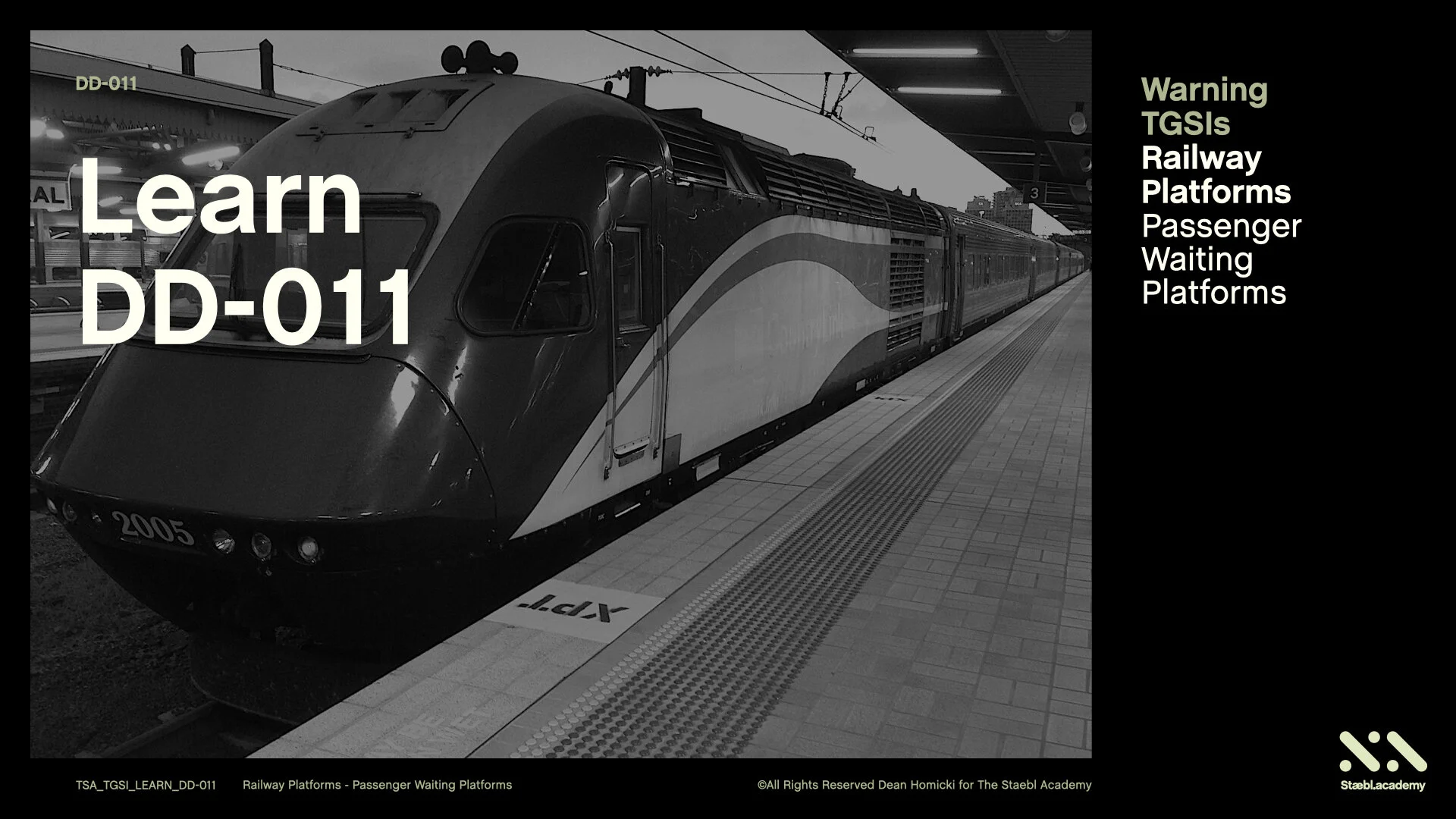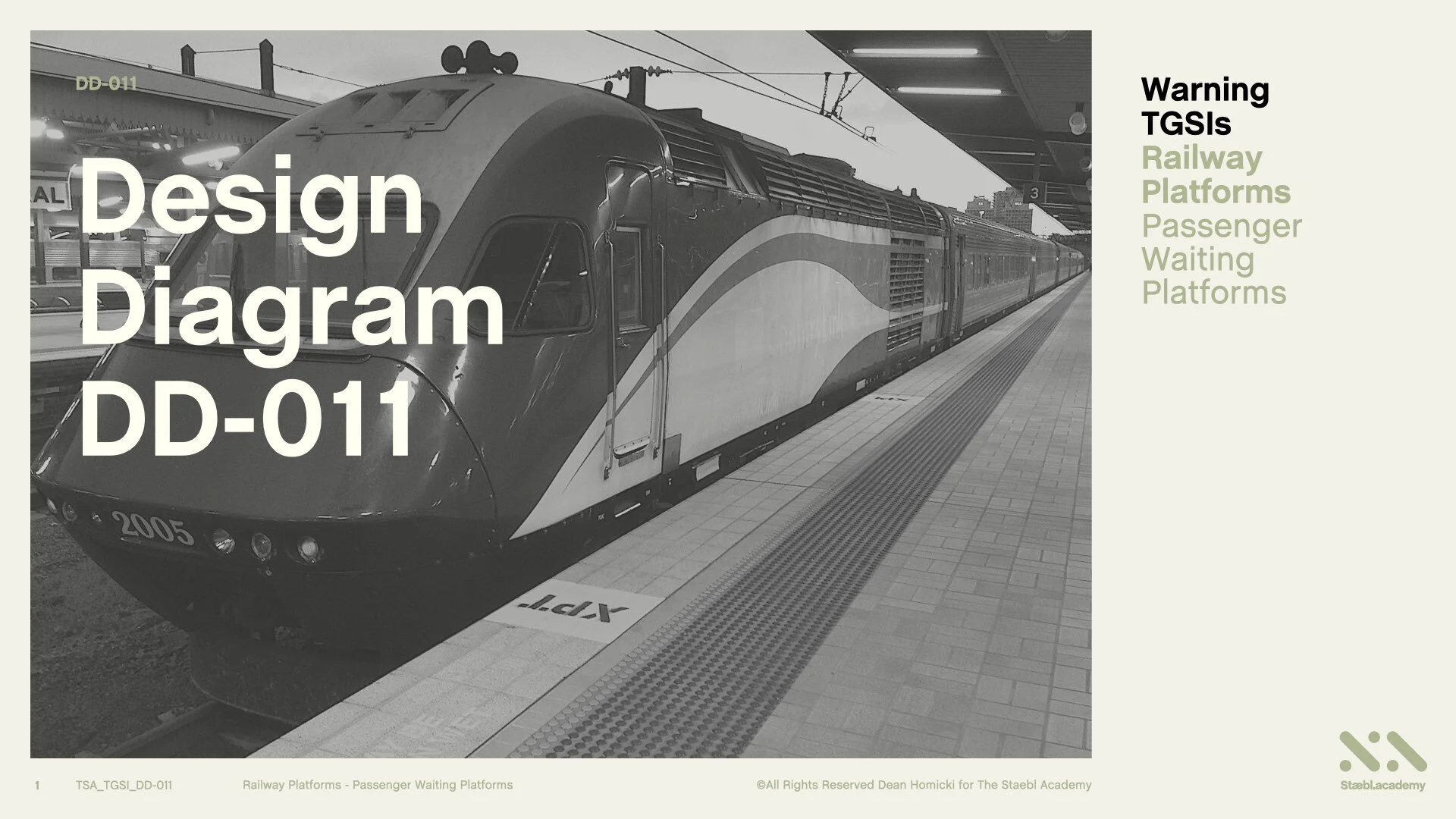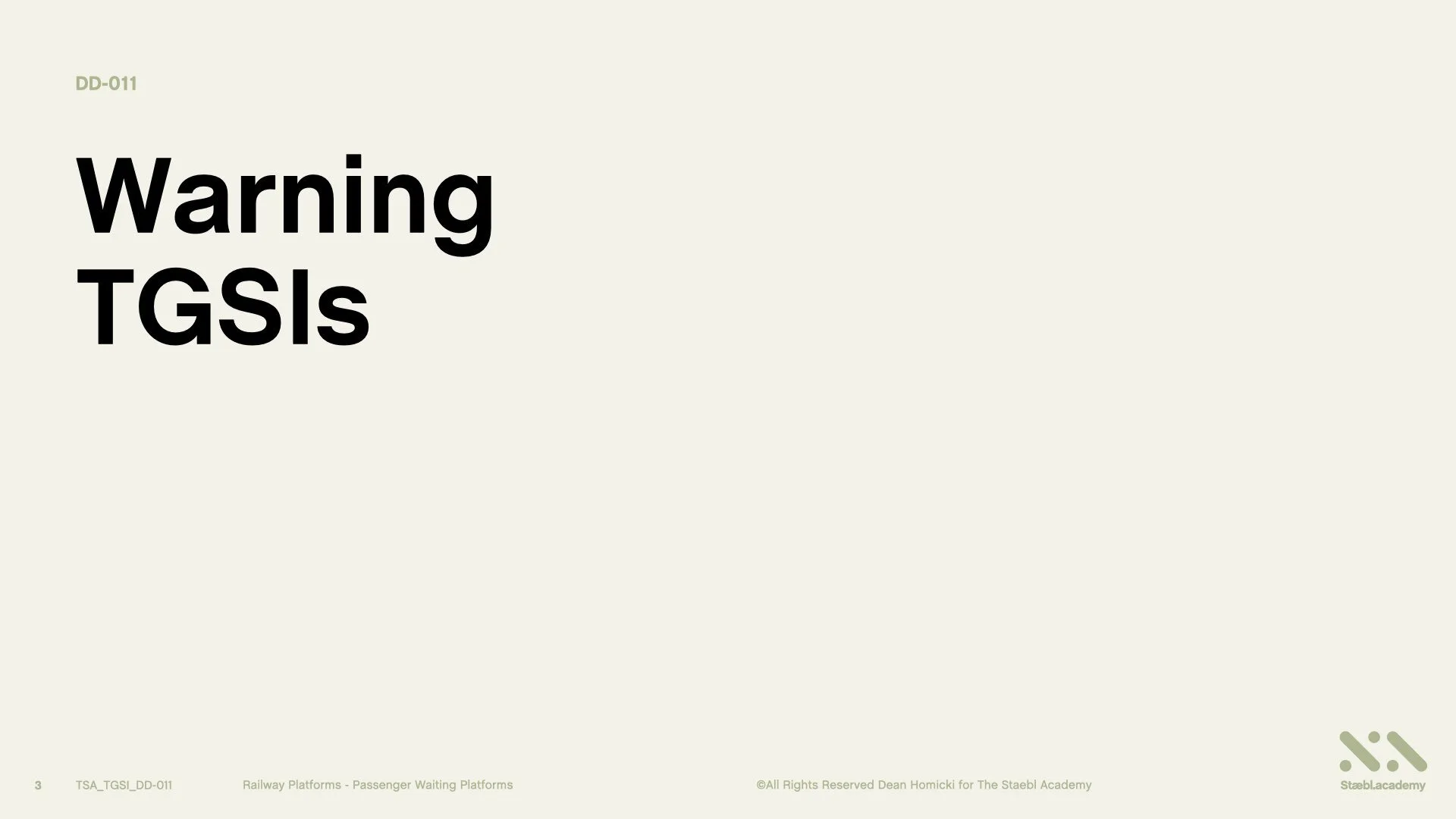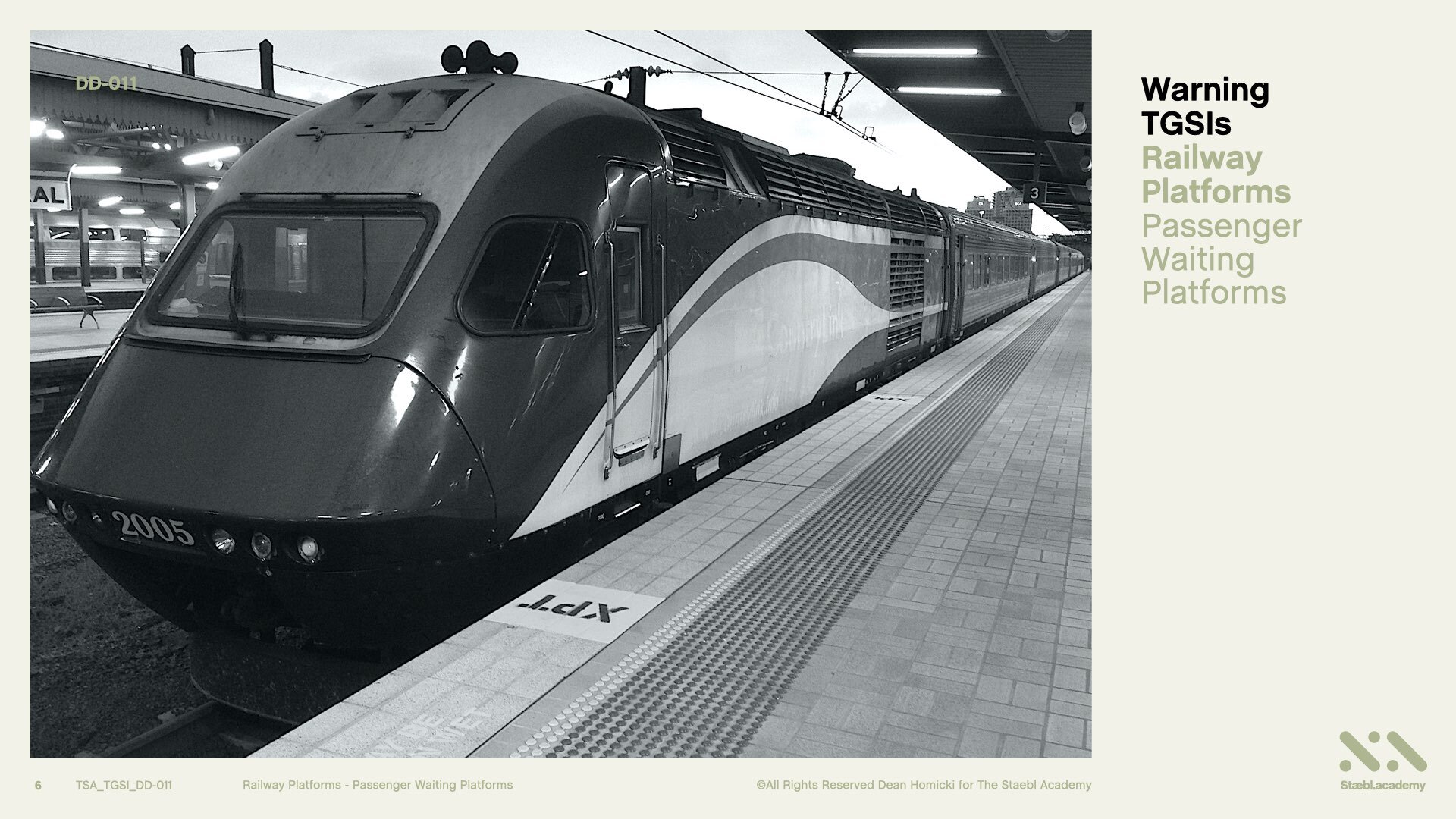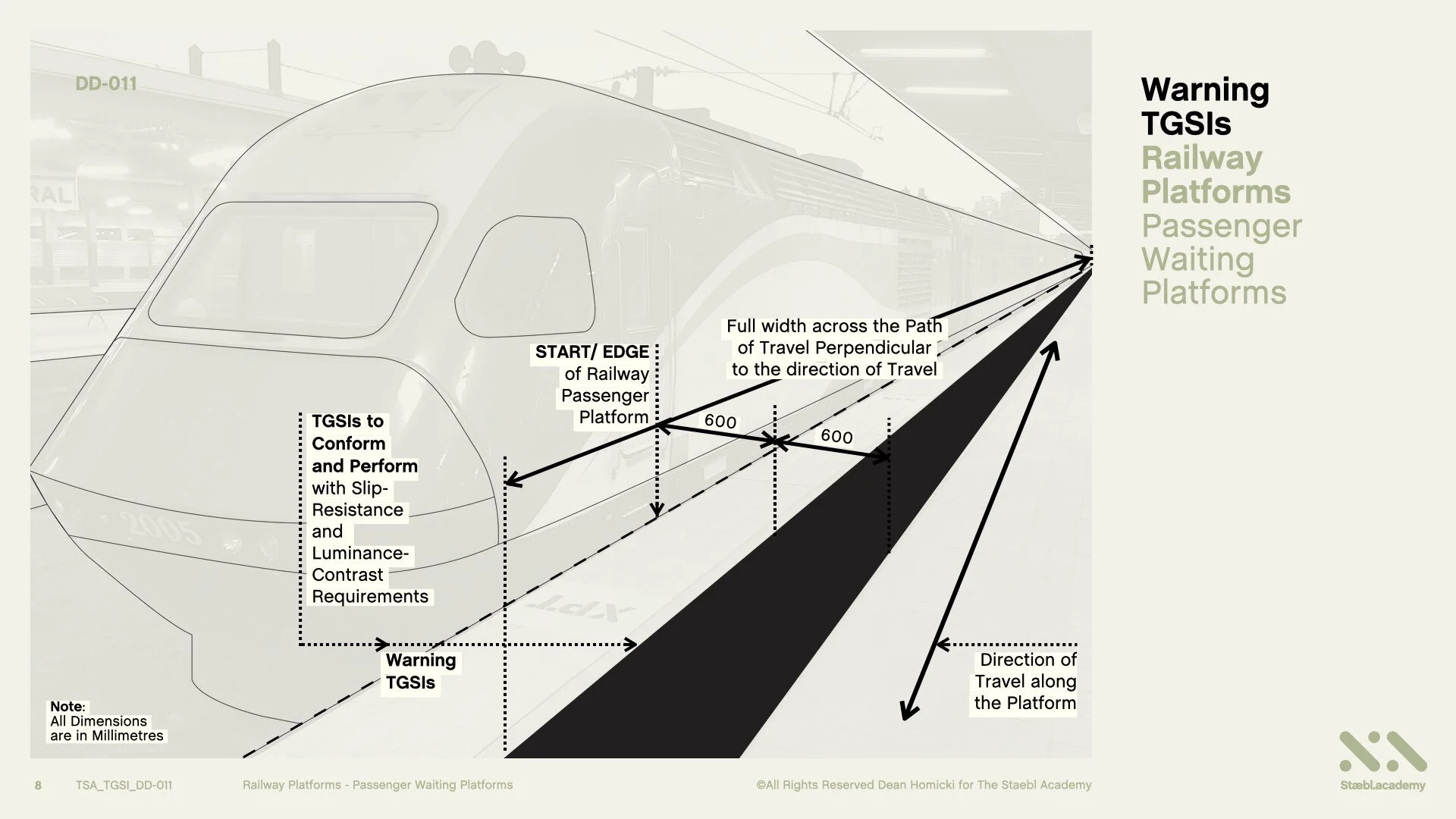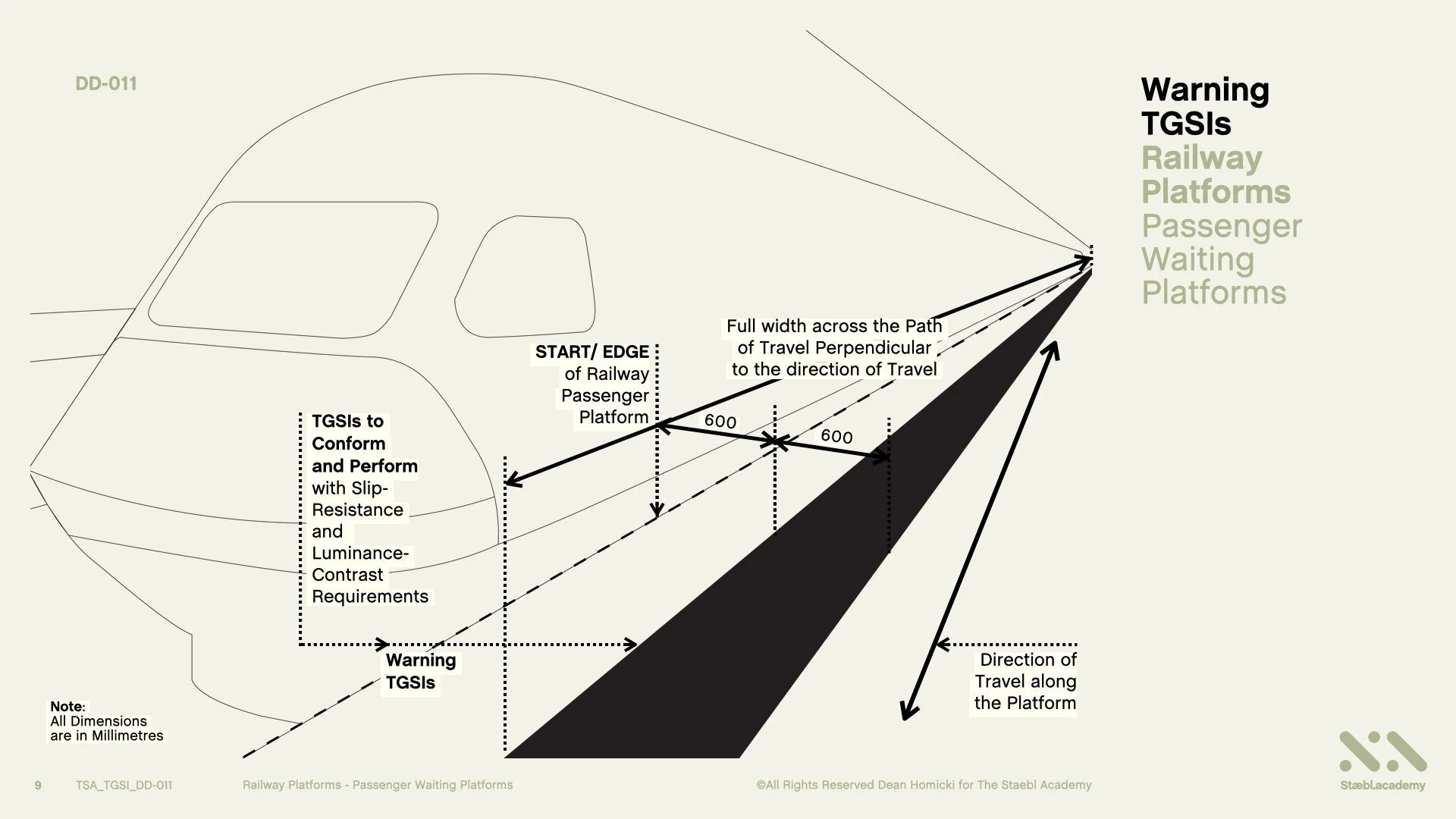Railway Platforms- Passenger Waiting Platforms
Course: DD-011 | Length: 4:36 mins | Instructor: Dean Homicki
Chapters
00:22 - Learning Overview
01:26 - Learning Session
02:08 - Let’s Begin
04:00 - Learning Resources
Transcript
This learning session will cover the use of Warning TGSIs on:
Railway Passenger Waiting Platforms.
Welcome to staebl.academy TGSI Design Diagram 011. I’m Dean Homicki and I’ll be your guide for this course.
Learning Overview
Let’s review one type of Railway Passenger Waiting Platform and together extract what the Australian TGSI Standard requires of the situation.
Warning TGSIs Shall be set back from the edge of the Railway Platform Edge, at the distance of 600 mm, with a tolerance of +/- 10 mm, or a minimum depth of 600 mm.
TGSIs should be installed for the full length of the platform, parallel with the edge of the Platform, and the Direction of Travel for Boarding and Alighting, perpendicular to the Accessible Path of Travel.
TGSIs for this application shall also conform and perform, with the applicable Slip Resistance and Luminance Contrast Requirements.
Here is a real-life situation of a stationary train at a Railway Passenger Waiting Platform with discrete polyurethane Warning TGSIs installed.
We are going to now convert this image it into a perspective line drawing and view how TGSIs have been used in this application.
Here’s the line drawing of the image.
Learning Session
How to use TGSIs in this situation
In this example, passengers can approach the Railway Waiting Platform Edge from multiple angles.
There are also no barriers, such as fences or automated platform doors, to guide and orientate the safe passage of pedestrians.
For the orientation of persons who are blind or vision impaired, applying this knowledge enables us to determine how to use TGSIs and conform to the specifications of the Australian TGSI standards.
Let’s Begin
On this Railway Passenger Waiting Platform, we see an ‘Open Area’ on the right-hand side - that is, an area that is accessible at and from multiple angles of approach to the hazard. The hazard is the Platform Edge that passengers will cross-over to access a stationary train when boarding or alighting.
We can view here the ‘Direction of Travel’. This is the Platform walkway that is parallel to the Platform Edge and follows the full length of the Passenger Waiting Platform.
In this instance, Warning TGSIs have been be set back from the Platform Edge, a distance of 600 mm, with a tolerance of +/- 10 mm, for a minimum depth of 600 mm. This equates to 12 TGSI nodes at 50 mm spacings. And, for the full width across the Accessible Path of Travel, and must be parallel and perpendicular to the direction of travel.
TGSIs for this application shall also conform and perform, with the applicable Slip Resistance and Luminance Contrast Requirements.
These TGSI design fundamentals apply to all Railway Passenger Platform Edges. Persons who are blind or vision-impaired rely upon the consistent placement of TGSIs to provide them with a safe means to orient themselves in the built environment.
TGSIs applied to all platform edges (‘The Hazard’), will promote the safe navigation of persons from the waiting platform to the boarding and the alighting from the waiting train.
And here is a real-life TGSI application once more.
Learning Resources
That’s the conclusion for Warning TGSIs on Railway Passenger Waiting Platforms.
You can also access this course as a concise series of design diagrams in the resource section of our website staebl.academy/design. To access this resource now, click on the link below this video.
Thanks for joining me here at the staebl.academy. I look forward to guiding you through another learning session in the near future. Bye for now.
Listen
Click/Tap the audio player below to listen to the written transcript of this design session as an audible version. This is a streamed broadcast from the Staebl.academy site.
Diagrams
Click/Tap on an image from this learning session to view it as a larger picture. You will then be able to scroll through each individual design diagram in this slide-deck for a closer inspection.
Sources
TSA-TGSI-LEARN-DD-011 - This staebl.academy course module has drawn information from the following sources:
AS/NZS 1428.4.1: 2009 (Amendments 1 & 2) Design for Access and Mobility: Means to assist the orientation of people with a vision impairment - Tactile Ground Surface Indicators - Section 2, 2.2 (a) & (b), 2.3.1 General, 2.3.2, 2.3.3 (a), (b), (c), (e), (f) & (g), 2.5, Fig 2.5 (A) Drawing (a) & (b), Fig 2.1 (a), (b) & (c) AMDT No.2 Dec 2014, Section 3, 3.5, Fig 3.5 (a) & (b), Appendix A, A3.1 General, A3.2 (a)


